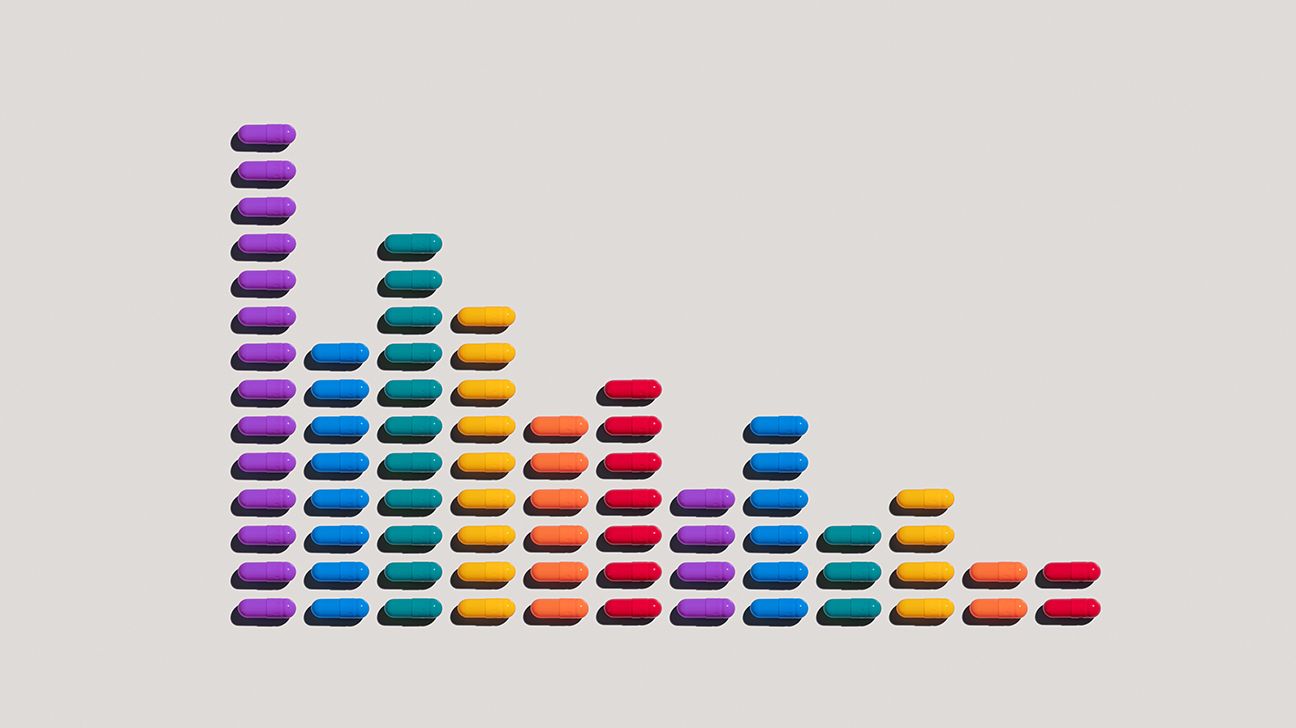Tapering, in medical terms, means reducing your dosage of a medication gradually. It can occur over days to weeks. A doctor makes these dosage changes to wean you off a medication completely.
Doctors may taper some medications when recommending stopping them. The gradual reduction in dosage helps the body to adjust to lower doses with time. This helps prevent withdrawal symptoms that could occur when stopping certain drugs.
Withdrawal symptoms are side effects that can occur if the body is dependent on the drug. (With dependence, your body needs the drug to function as usual.)
Different classes or groups of drugs may require tapering in a certain way because of their mechanism of action. This means how they work in the body.

Antiepileptic drugs (also called seizure drugs) help prevent seizure. Examples of these drugs include:
- dibenzazepine anticonvulsants, such as carbamazepine (Carbatrol) or oxcarbazepine (Trileptal)
- gamma-aminobutyric acid analogs, such as gabapentin (Neurontin) or pregabalin (Lyrica)
- pyrrolidine anticonvulsants, such as levetiracetam (Keppra) or brivaracetam (Briviact)
Tapering antiepileptic drugs is not intended to prevent seizure or make epilepsy better. Stopping or lowering these medications can raise the risk of a seizure
ADHD drugs are often stimulant medications that help treat ADHD. Examples of these drugs are as follows:
- amphetamine and dextroamphetamine (Adderall)
- methylphenidate (Ritalin)
- lisdexamfetamine (Vyvanse)
- methamphetamine (Desoxyn)
Suddenly stopping these medications can cause withdrawal symptoms, so the manufacturers recommend tapering. Withdrawal symptoms can include:
- anxiety
- depression
- fatigue (low energy)
- irritability
Beta-blockers are medications that treat heart conditions or high blood pressure. Examples of beta-blockers are:
- propranolol (Inderal)
- carvedilol (Coreg)
- metoprolol (Lopressor, Toprol XL)
When stopping beta-blocker medications, doctors should
- sudden rise in blood pressure, sometimes even higher than before treatment
- heart attack
- shifts in heart rate
Clonidine and alpha-agonist medications treat high blood pressure, ADHD, or withdrawal symptoms. Examples include:
- clonidine (Catapres, Kapvay)
- guanfacine (Intuniv, Tenex)
Stopping these medications suddenly can cause a rapid heart rate. It can also cause a sudden rise in blood pressure, sometimes even higher than before the treatment. This includes extended-release guanfacine and extended-release clonidine, according to the
Doctors may prescribe corticosteroids (steroids) to treat asthma and other autoimmune diseases. Sometimes they prescribe them long term.
Corticosteroid medications include:
- dexamethasone
- triamcinolone
- prednisone (Rayos)
When stopping oral steroids, you may need to taper off them. This helps you avoid fatigue (low energy), adrenal insufficiency (very low hormone levels), and joint pain.
Doctors prescribe opioid medications to help treat pain. Examples of opioids are:
Clinical guidelines from the U.S. Department of Health and Human Services stress that it’s important to taper opioid medications slowly. If they’re not tapered, suddenly stopping them can result in severe withdrawal symptoms, including:
- severe pain
- muscle aches
- nausea and vomiting
- chills
- insomnia (trouble sleeping)
- cravings for the medication
PPIs are used to treat heartburn, acid reflux, and stomach ulcer. Examples of PPIs are:
- omeprazole (Prilosec)
- pantoprazole (Protonix)
- esomeprazole (Nexium)
The
Healthcare professionals may use psychotropic medications to treat certain mental health conditions. Benzodiazepines are a type of psychotropic medication.
Examples of psychotropic medications that require slow, careful tapering are:
- benzodiazepines:
- antipsychotics:
- phenothiazines, such as fluphenazine or perphenazine
- thioxanthenes, such as thiothixene
- antidepressants:
- selective serotonin reuptake inhibitors (SSRIs), such as escitalopram (Lexapro) or fluoxetine (Prozac)
- monoamine oxidase inhibitors (MAOIs), such as phenelzine (Nardil) or selegiline (Emsam)
- serotonin-norepinephrine reuptake inhibitors (SNRIs), like duloxetine (Cymbalta) or venlafaxine (Effexor)
Clinical guidelines stress that drugs prescribed for mental health conditions may require tapering. When taking benzodiazepines, the body may become dependent on these drugs. So your doctor will evaluate whether this is a concern in your treatment and either stop the medication or taper it.
Suddenly stopping psychotropic medications without tapering in some situations could lead to certain symptoms, including:
- anxiety
- changes in mood
- hallucinations (sensing something that isn’t real)
- insomnia (trouble sleeping)
- seizure
You may hear other terms that relate to dosing, which are discussed below. They all differ from tapering.
Deprescribing
Deprescribing is the process of tapering, discontinuing, stopping, or withdrawing drugs for two purposes. One is to manage the use of multiple medications (often used at the same time) to treat a disease or condition. The other is to improve patient outcomes.
Drug peak
A drug peak is the highest amount of a drug in the body. (Rarely, it’s been called a drug zenith.) This can be helpful information to determine the amount of time between doses of a drug. A peak occurs sometime after a dose of a drug.
Titrating (or titration)
Titration is a gradual increase of your dosage to help your body adjust to a higher level of the drug. Doing so can help lower or prevent certain side effects of the drug.
Trough medication
Trough medication refers to the lowest amount of a drug in the body. This is helpful information to determine the amount of time between doses of a drug. A trough occurs after the body has broken down a drug.




